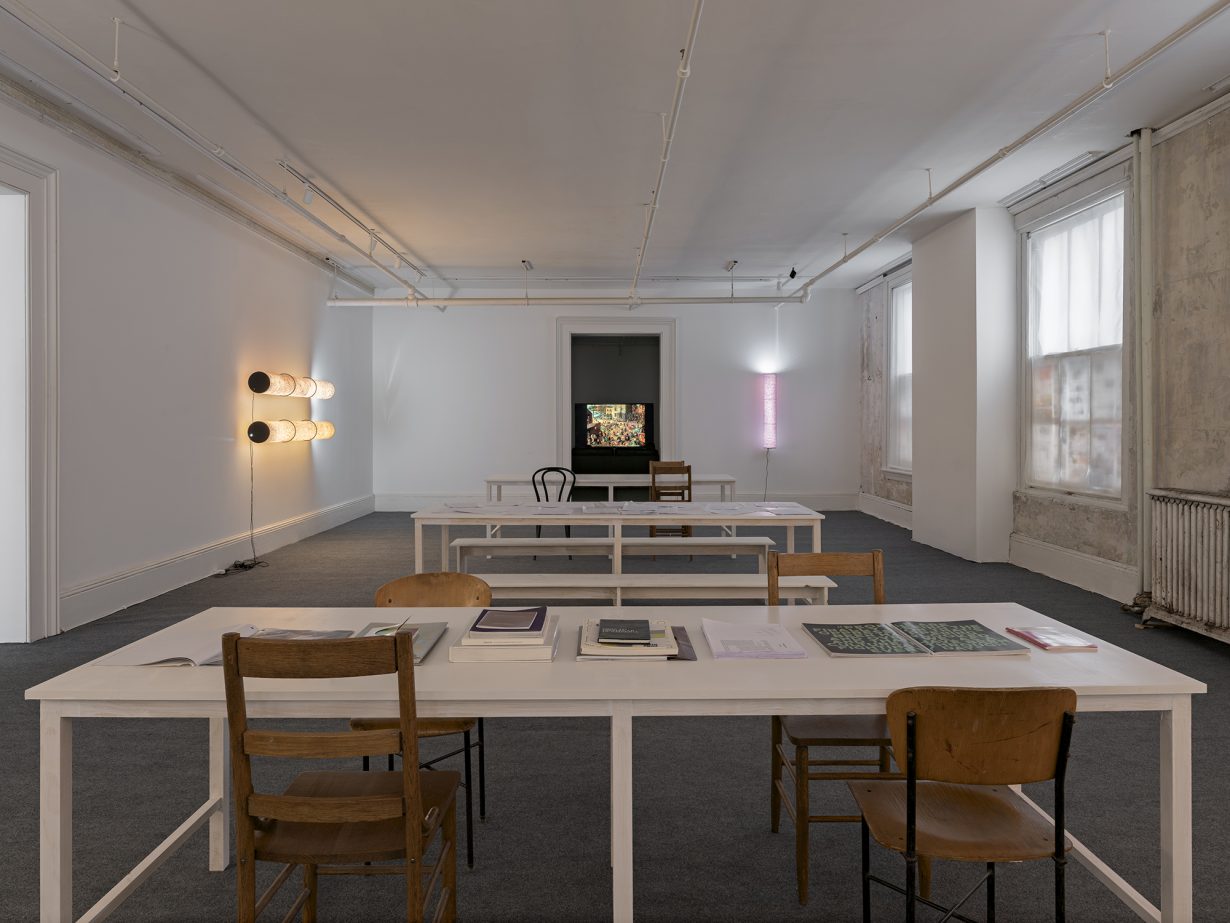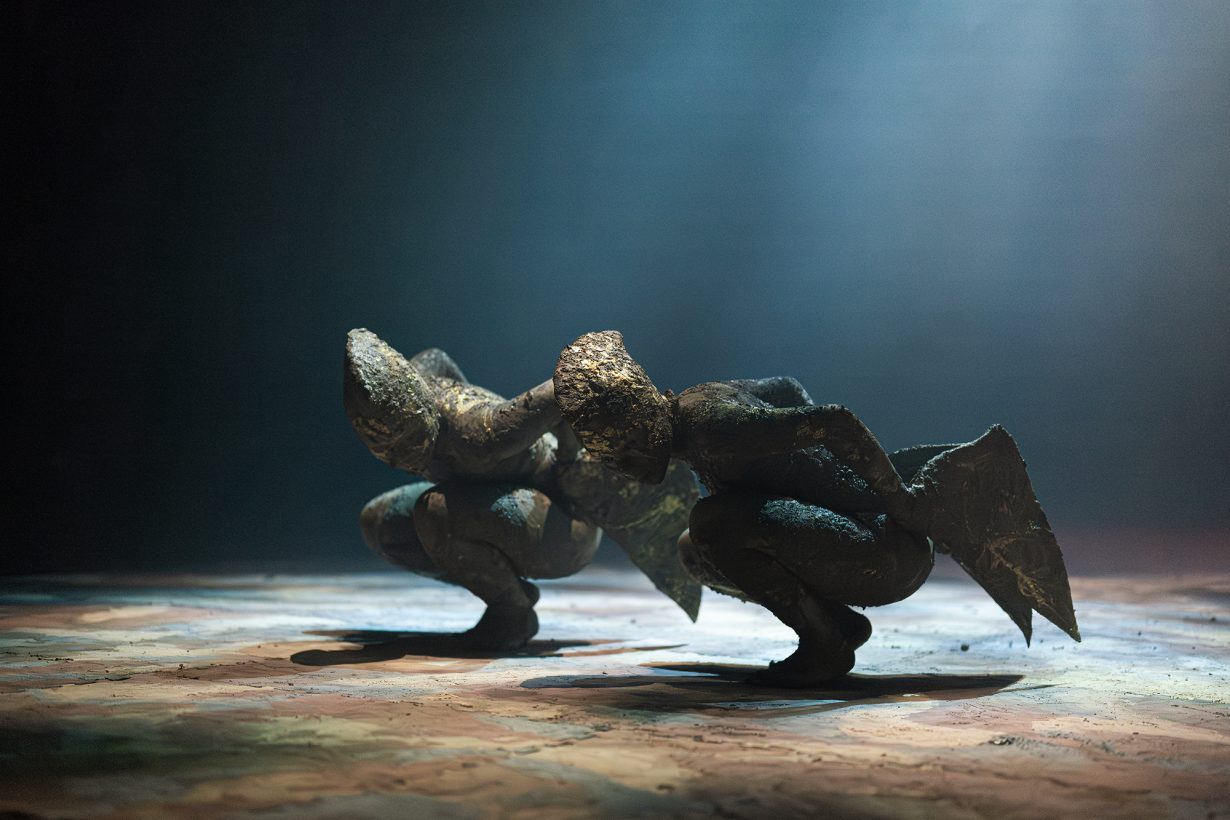The idea of prehistory, with its glinting, uncontroversial promise of a shared origin, still seduces the artworld. Can it mean more than fantasy?
‘We are headed toward extinction in a shiny, driverless car, and the question is: How do we exit this car?’ So says Bruno Lacombe, a fictional cave-dwelling octogenarian in Rachel Kushner’s acclaimed eco-spy novel Creation Lake (2024). The answer, for Lacombe, lies in learning from the ways of Homo neanderthalensis, who ‘bravely risked his life with a short-range thrusting spear’ (while ‘Homo sapiens opted for a long-range throwing javelin’). The Neanderthal slept to dream, gorged on ‘substances and behaviors that induced feelings of pleasure’ and let his body dictate what came next. He is the ideal lodestar for a group of eco-activists in rural France whose ranks the book’s protagonist, a disgraced American intelligencer, is attempting to infiltrate. This is all unearthed for us in Lacombe’s long and, admittedly, compelling emails advocating for a non-sapiens worldview, filched by Kushner’s spy.
At the paperback launch for Creation Lake, held in July at the Red Hook not-for-profit Pioneer Works, I thought of the artist Seth Price, for whose practice writing has been a form, a subject and a dilemma since the early 2000s. Last autumn, performing a story titled ‘Before Writing, and After’ for a programme at EARTH, Price concluded with an enigmatic reference to an entrepreneur who had initiated clinical trials for a synthetic bacterium that, when injected, could downgrade the brain’s language faculties. This drug, Price proposed through his entrepreneur proxy, might allow people to jettison writing and philosophy and instead embody “presence, engagement and a heart that was open to the moment”. It would forestall our destruction of the planet and might even provide the key to us “somehow getting back to the Garden” – or to what Lacombe calls ‘our world before the fall’. In a recent solo exhibition at 15 Orient, Price reprised these themes in a series of meandering, recursive textual fragments printed on A4 paper and scattered across a wooden table. The texts could be perused while visitors sat facing a monitor playing the latest version of his video essay Redistribution (2007–), which features, among its dense, disjunctive footage, images of the cave paintings in Lascaux and La Marche. The numbered A4 documents touch on art, magic, technology, capitalism, the zeitgeists of various decades and the idea of freezing the world’s communications infrastructure to ‘reset us to the Paleolithic’.

Price’s untimely meditations followed me to a matinee performance of the Java-based dance collective Prehistoric Body Theater’s Ghosts of Hell Creek: Stone Garuda at the Asia Society Museum. Originally developed as a soft introduction to the idea of scientific evolution for residents of Dasuk, a conservative Islamic village on the Indonesian island of Madura, Ghosts of Hell Creek opened on a scene set over 60 million years before the dawn of humanity. Flaxen light and projections evoking dappled shade shone on a small group of dancers on a low square platform. Their bodies were coated in patches of ochre-coloured clay. On their hands were fan-shaped appendages, and on their heads they wore flat, pointed crests. Moving to a gamelan score with rumbling percussion, birdsong and strings, six performers mimicked the posture and locomotion of a feathered, flightless dinosaur named Acheroraptor temertyorum. Leaning forward with arched backs, pulsing on bent knees with their elbows tucked at their sides, they assumed butoh-esque poses, occasionally stomping or leaping to engage or intimidate their fellow raptors. Two additional dancers circled the platform on all fours, mimicking Purgatorius unio, an ancestor of modern primates that coexisted with Acheroraptor and survived the K–Pg mass extinction, which the performance would later depict.
Importantly, Ghosts of Hell Creek utilised no spoken narration and no projected text. The director, Ari Rudenko, rejected the use of language onstage to ensure that the piece ‘hit the audience on a visceral level’. In order to ensure, then, that the audience did not lose the plot, the narrative enacted by these strange emissaries from the Late Cretaceous was stripped down to its most simplistic and unambiguous filament. The male Acheroraptor competed for female mates; the Purgatorius picked lice from each other’s heads. Three quarters past the hour, the dancers huddled. The lights shifted from gold to red, and the sizzling sound of fire drowned out the percussive bassline as they swayed side to side before wilting into a heap. Then: brightness, birdsong. The dancers rose, stretched their arms – now shorn of wings – and caressed one another with newfound empathy, before quickly organising into a warlike tribe and charging offstage. The tale of evolution was done, and it’d gone just as I, being neither a scientist nor an artist, had previously imagined.

In a sense, prehistory seduces us, as it seduced the modernists, with its glinting, uncontroversial promise of a shared origin. Ghosts of Hell Creek claims to invoke a ‘single vast story of common descent’. Price describes a Paleolithic era in which there existed “but one human, boundless and ageless”. What’s implied in these deep-time fantasies is a world in which living beings with, presumably, the same values share a single narrative, where our activities go unquestioned in favour of a kind of perpetual presence of mind. But while I was impressed by how well members of Prehistoric Body Theater expressed, via their exaggerated nonverbal gestures, a state of total presence and unflagging engagement with their surroundings, their bodies and one another, I didn’t find the world they’d portrayed, which contained neither text nor subtext, to be particularly hospitable. Which is to say, I would sacrifice a bit of presence in order to write, to interpret, to complicate the scene at hand.
Towards the end of July I went to the Met to look at Paleolithic bifaces in a display case. Found in Aisne, France, these specimens were made from flint and quartzite between 700,000 and 200,000 BCE. They were tear-shaped, uncomplicated in appearance. ‘The examples in this case reveal an early interest in perfection of form’, someone at the museum had written. The bifaces could have been weapons, and they could have been aesthetic objects. Perhaps their contemporaries had debated fiercely over what it meant to make them.
